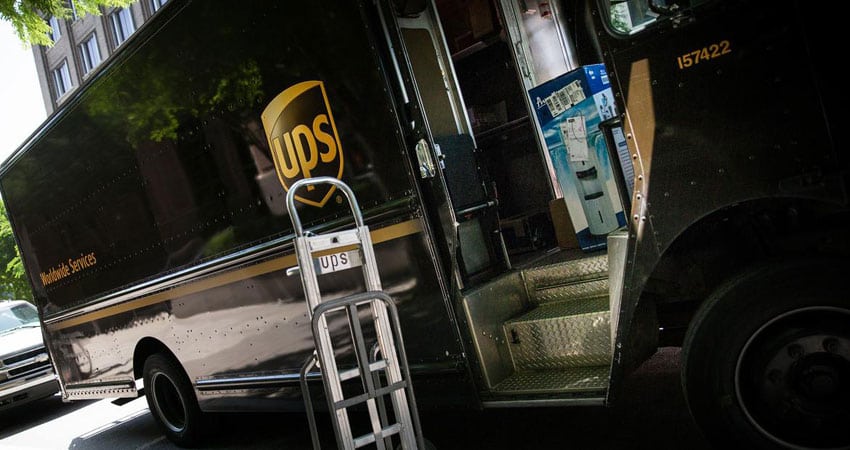UPS saw package volume increase by a below-projection 0.2% in Q4, higher in the beginning and lighter at the end, as the Omicron surge, the pull-forward of shopper activity and retail inventory challenges weighed on the key metric, the company said in its fourth quarter call.
“We would expect peak next year from a revenue mix to be more like what we’ve seen in the past, which is more enterprise business,” UPS CEO Carol Tomé told analysts.
The major carrier is also seeing an ongoing shift of its business to more profitable B2B shipments vs. B2B, a main focus of Tomé, as domestic profit per package increased 16.4% in the quarter.
“The mix also shifted positively toward commercial volume as our B2B average daily volume continued to recover and was up 8.8%,” said UPS CFO Brian Newman. “B2B represented 36% of our volume compared to 33% in the fourth quarter of 2020.” He added UPS handled an average of 25.2 million packages per day in Q4.
Tomé said UPS is focused on growth in sectors “that value our end-to-end network,” listing B2B, healthcare, SMBs and enterprise accounts. While ceding more of the less profitable home delivery space, UPS has invested in serving the last mile through its 2021 acquisition of Roadie. The new unit also brings rich data UPS can analyze to identify efficiencies.
“In 2021, our SMB average daily volume grew 18% and represented 26.8% of our total U.S. volume, putting us on track to achieve our 2023 target of more than 30%,” she said.
In terms of capital expenditures, Newman said it would be about 5.4% of revenue or $5.5 billion in 2022, including the purchase of more than 3,700 alternative fuel vehicles, as well as 21 Boeing 747-8 and two 767 air freighters; the latter will go into service this year, the former between 2023 and 2025. Sustainability initiatives account for $1 billion of that total.
“These investments will continue to improve overall network efficiency and move us further down the path to achieving our 2050 carbon neutral goal,” he said. “About 60% of our capital spending plan will be allocated to growth projects and about 40% to maintenance.”
Tomé said UPS improved domestic production, as measured in pieces per hour, by 1.7% in Q4, driven by investments in automated bagging and label application and robotic sort induction, as well as a new RFID smart package initiative.
“You can imagine our pre-loaders are manually scanning every package,” she said. “That’s 20 million-plus packages a day that are being manually scanned. That manual scan will disappear with the smart package, smart facilities. So, the opportunities are endless in many ways.”
Tomé said Amazon’s contribution to UPS’s topline has remained virtually flat through the pandemic, representing 11.7% in 2021 vs. 11.6% in 2019.
“Amazon’s revenue surged with us during 2020 as a result of the pandemic,” she said. “At the third quarter, their revenue as a percent of our total is trending more like what we experienced in 2019. And that’s held true for the entire year.”
For Q4, UPS’s consolidated revenue was up 11.5% to $27.8 billion, and operating profit grew 37.7% to a record $4 billion. For the full year, consolidated revenue was up 15% to $97.3 billion, and operating profit rose 50.8% to $13.1 billion. Free cash flow doubled to $10.9 billion, and earnings per diluted share were up 47.4% to $12.13.

